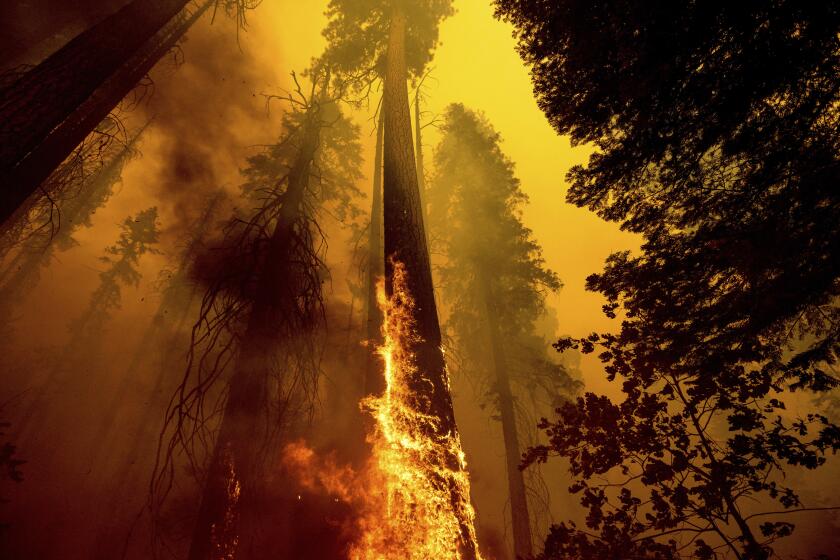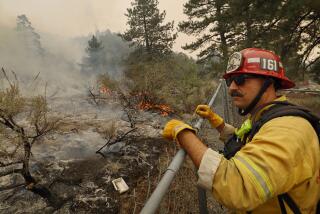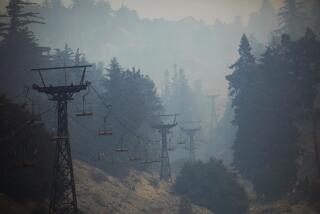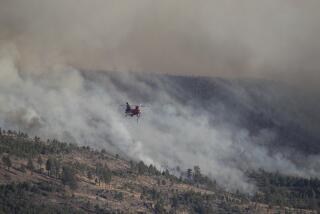Washburn fire moves into Sierra National Forest as fire fight continues in Yosemite
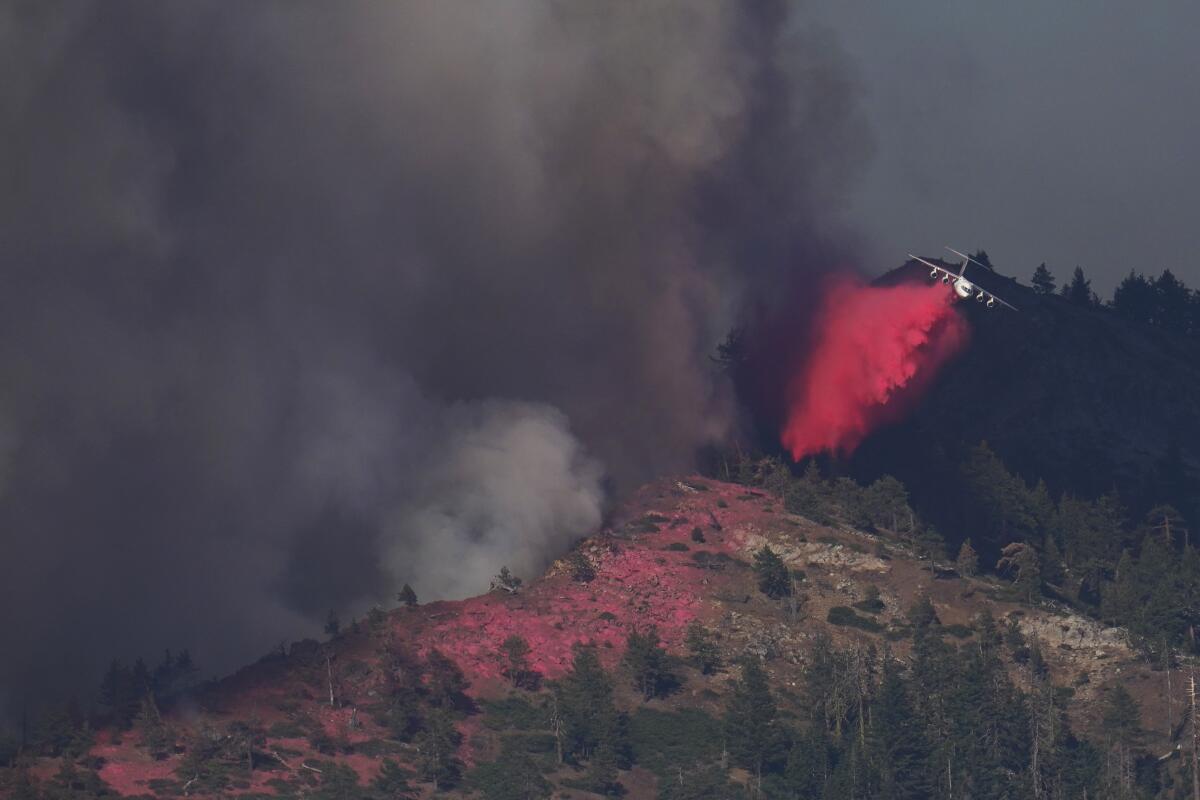
The Washburn fire advanced into the Sierra National Forest on Wednesday, prompting further closures as the blaze continued burning in Yosemite National Park.
Hot, dry conditions drove “active to very active fire behavior,” including torching and intense fire runs into the crowns of trees on slopes, officials said.
As of Wednesday night, the fire was 4,261 acres and 23% contained, officials said.
With the fire’s spread into the Sierra National Forest, authorities have closed Forest Routes 5S43; 5S06, which is also known as Mt. Raymond Road; 5S22; and 5S37, forest officials said. The closure will be effective through Aug. 1.
Crews observed significant fire activity on the blaze’s east flank, along the south fork of the Merced River toward Iron Creek, officials said Wednesday night, adding that spot fires were possible north of the river “as the fire backs to the bottom of the slope.”
Continued warm and dry conditions over the next 24 hours are expected to fuel “an increase in fire behavior,” with the activity extending into the nighttime hours, officials said.
Containment lines are holding well, and crews are working to reinforce and work the lines farther in, said Matt Ahearn, operations section chief for California Interagency Incident Management Team 13.
While the Forest Service has yet to release the official cause of the fire, a Yosemite spokesperson indicated that it was not naturally caused.
Additional crews are working outside the fire lines, clearing fuel sources from around cabins to the south of the blaze, Ahearn said.
Officials highlighted a years-long effort to reduce the number of trees, both living and dead, in some areas within Yosemite.
“This never-ending task involves thinning trees with a variety of masticating and chipping equipment, chain saws and through the use of low-intensity ground fire when conditions permit,” officials said. “The high-severity fire activity we are currently experiencing on the Washburn fire is the result of fire being fueled by a large forested area with an extremely concentrated biomass.”
The community of Wawona remains under a mandatory evacuation order, and firefighters are confident they can protect the Mariposa Grove, home to more than 500 mature sequoias, including the 3,000-year old Grizzly Giant.
The Save Our Sequoias Act would provide $350 million over 10 years to protect the iconic trees, thousands of which have burned in recent years.
On Wednesday, officials pointed to ongoing fuel reduction efforts in the grove.
Low-intensity burning in the area is ultimately beneficial to the trees, which evolved with wildfire and rely on extreme heat to release their seeds.
“The result is that the Mariposa Grove survived, remains in good health and a healthier habitat has been created for local flora and fauna,” officials said.
There remains some cause for concern, as recent years have seen large numbers of the ancient trees killed by hot, fast fires fueled by climate change. Last year’s KNP Complex and Windy fires in California killed an estimated 3% to 5% of the world’s sequoias a year after the Castle fire killed up to 14% of the population, and firefighters at the Washburn fire have set up sprinkler systems to help protect the Grizzly Giant and other at-risk trees.
More to Read
Sign up for Essential California
The most important California stories and recommendations in your inbox every morning.
You may occasionally receive promotional content from the Los Angeles Times.

